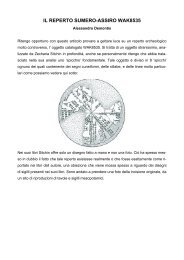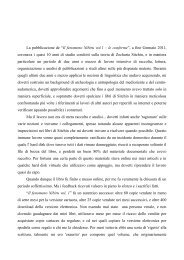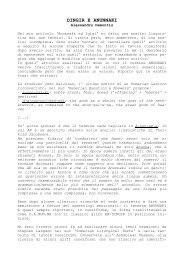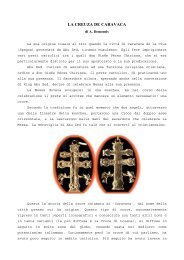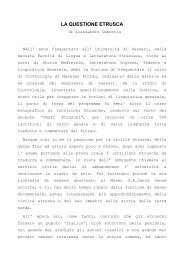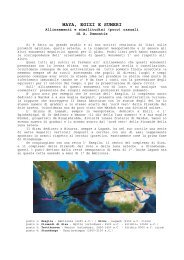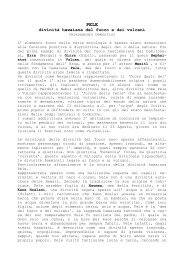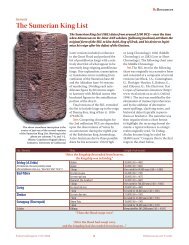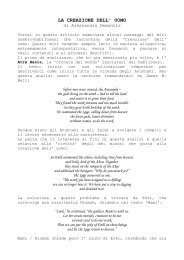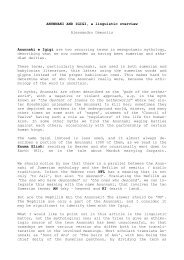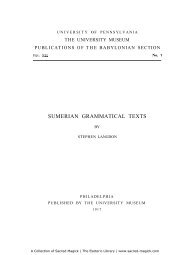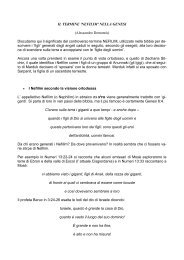LE MOTIVAZIONI DI IAN LAWTON Per comprendere bene il motivo ...
LE MOTIVAZIONI DI IAN LAWTON Per comprendere bene il motivo ...
LE MOTIVAZIONI DI IAN LAWTON Per comprendere bene il motivo ...
You also want an ePaper? Increase the reach of your titles
YUMPU automatically turns print PDFs into web optimized ePapers that Google loves.
The Mesopotamian texts that refer to the inner enclosures of temples,<br />
or to the heavenly journeys of the gods, or even to instances where mortals<br />
ascended to the heavens, employ the Sumerian term Mu or its Semitic<br />
derivatives Shu-Mu (“that which is a mu”), sham, or shem.<br />
Because the term also connoted “that by which one is remembered,”<br />
the word has come to be taken as meaning “name.”<br />
But the universal application of “name” to early texts that spoke of an<br />
object used in flying has obscured the true meaning of the ancient records.<br />
Inoltre Sitchin afferma che <strong>il</strong> termine ‘MU’ (e anche Shem) veniva usato per<br />
descrivere delle pietre commemorative che mostravano divinità dentro strutture coniche<br />
sim<strong>il</strong>i a navicelle (riporta anche un esempio fotografico di una di queste pietre) e che<br />
siccome queste navicelle erano ciò per cui gli dei erano ricordati, e queste pietre in luoghi<br />
lontani dai templi erano delle sorte di ‘simulacri’ per l’ adorazione del dio, <strong>il</strong> termine che le<br />
descriveva ha assunto un significato che rimanda al nome o alla fama del dio in questione.<br />
L’ obiezione che Lawton muove a Sitchin è che <strong>il</strong> termine MU da cui Sitchin fa derivare<br />
Shem (tramite Shu-Mu) viene indicato dagli studiosi come un suffisso verbale che non<br />
richiede traduzione.<br />
In realtà non è esattamente così. La parola MU ha una lunghissima serie di significati<br />
come riportato in tanti testi quali per esempio Sumerian Lexicon (1996-1999 John Alan<br />
Halloran). Mu viene usato spesso come prefisso e i significati più comuni sono ‘nome’ ,<br />
‘anno’ , un prefisso personale, ‘vestito’.<br />
year).<br />
Ecco una serie di esempi in cui Halloran traduce la particella MU:<br />
mu-X: year X (indicates a date according to a notable event that occurred during the<br />
Mu-…-a(k)-šè: because (in a nominalized sentence); for somebody’s sake (‘name’ +<br />
genitive + terminative).<br />
Mu-d<strong>il</strong>i-d<strong>il</strong>i: individual entries (in a lexical series) (‘entry, line on a tablet’ +<br />
reduplicated ‘single’).<br />
Mu-dur7[BU](-ra): dirt; dirty (rags).<br />
Mu-gub: assigned lines (‘word, sentence’ + ‘to set down’).<br />
12



